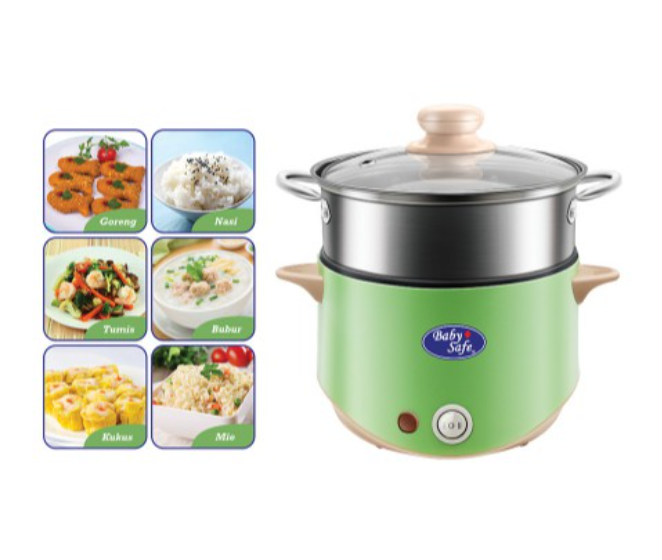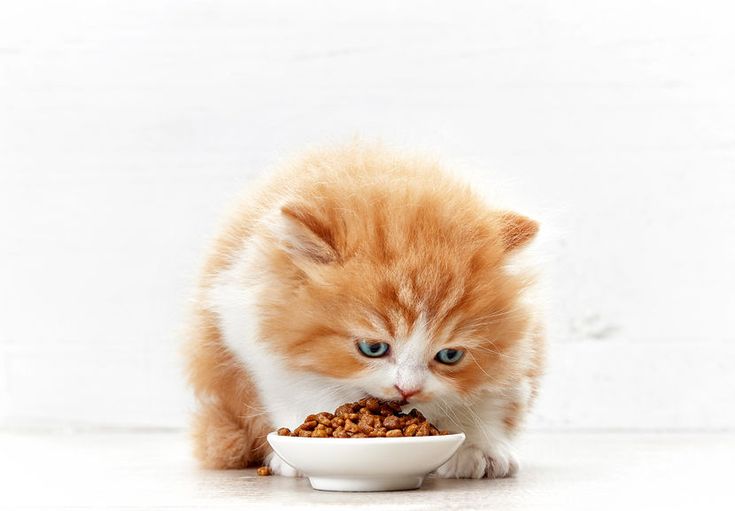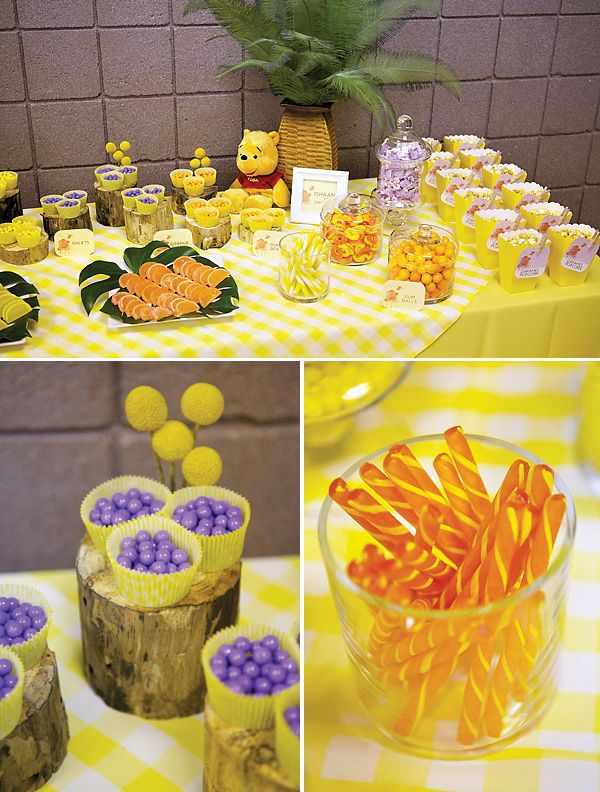Steam or boil baby food
How to Cook Homemade Baby Food
Image: Getty
Did you know cooking for your baby is just as easy as cooking for the whole family? There are many ways to heat and thaw homemade baby food. On this page we will tell you all about heating and thawing your homemade baby food cubes.
Cooking Baby Food – What are the best cooking methods for preparing homemade baby food?
When venturing into the world of baby food making, one of the most often asked questions is “How should I cook the foods that I will be making for my baby to maintain the most nutrients and flavor?”
There are several ways that you can cook foods for homemade baby food. This page will discuss the ways of cooking that are best for fruits, veggies and meats.
Cooking Fruits and Veggies for Homemade Baby Food
Baking/Roasting and Steaming are the preferred methods to use when cooking homemade baby food (and your food too!) with boiling in scant amounts of water being the second best method.
Foods such as sweet potato, white potato, carrots, parsnips and squash, peaches and pears are wonderfully flavorful when baked.
** Most pediatric sources recommend cooking fruits for babies who are under 8 months old. Bananas and avocado are an exception. For infants who start solids prior to 6 months old, cooking fruits is a good idea. Cooking fruits breaks them down thus enabling easier digestion in an immature tummy. An older baby will be better able to handle the fibers and sugars of raw fruits than will the baby who is younger and just starting on solids. There are many babies who do quite well with raw fruits from 6 months of age on so use your best judgement and consult your pediatrician about the need to cook fruits. Visit Baking Fruits for Baby for some tasty baked fruit recipes and ideas.
Cooking Meats for Homemade Baby Food
Baking is preferred as the most nutrients are retained. Typically, meat purees are best made with plain water as using the natural juices may make the taste too strong for baby; adding a fruit or veggie puree is a great way to introduce the flavor of meats.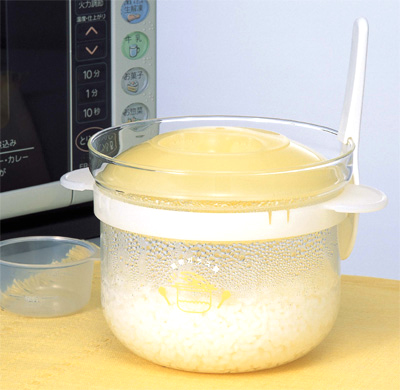
Crock pot or Slow-Cooker to Cook Meat for Baby Food – Using a crock pot or a slow-cooker to make meats for baby is a wonderful way to make a multi food combination meal. You may toss any foods that you want into the crock pot with the meat.
One of our favorite things to do is to take 3 chicken breasts (diced), a few carrots (diced and peeled), a diced onion and some other veggies and toss the whole lot into the pot. Add 4 or 5 cups of water and seasonings of your choice. All you need to do is turn the crock pot or slow-cooker on low and within 6-8 hours you have a nice meal.
If you poach or use a crock-pot (cook meats in liquids) and then throw away the juices, you are tossing out some nutrients as well so be sure to try and add those back into the finished meal!
I have included information regarding cooking in the microwaving due to the fact that many parents prefer to cook their foods this way. I believe that baking and steaming are the best cooking methods for optimal nutrient retention; microwaving food should be a last option whenever possible.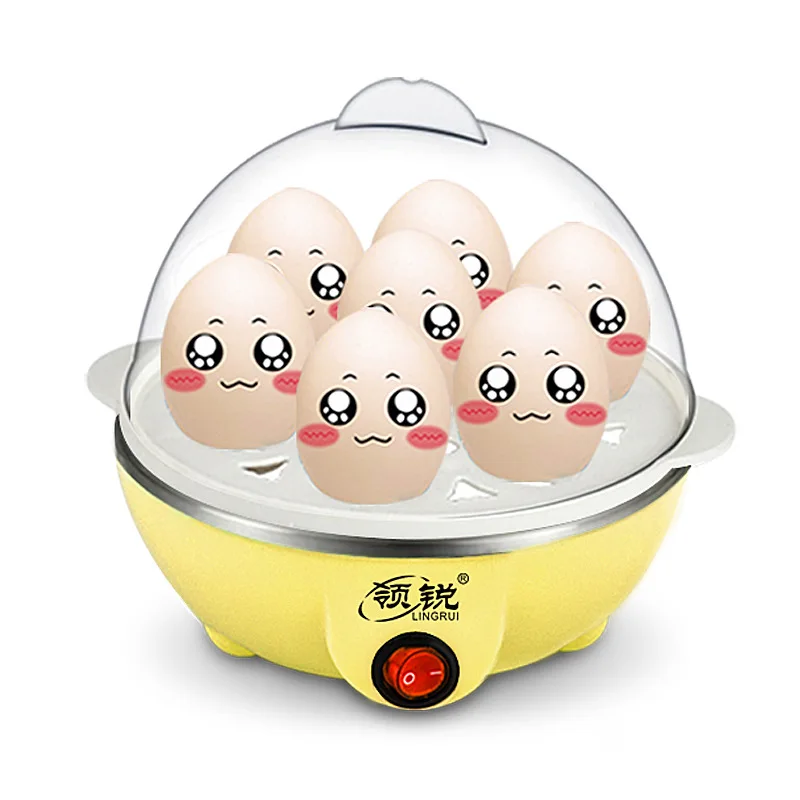
Methods of Cooking for Baby Food
Below is an outline of the different methods of cooking food and how nutritional content is affected. It covers all forms of cooking.
Steaming – This is one of the most preferred methods of cooking. By this method, nutrient loss in minimal. Left over water may be used as stock and for pureeing.
The longer any type of food is exposed to high temperatures and immersed in water, the higher the nutrient loss. (Can you imagine the nutrient loss in commercial baby foods that are cooked at sky-high temperatures to help prolong shelf life?.) Steaming as a cooking method helps foods retain their levels of water soluble vitamins too. Vitamin C is an important water soluble vitamin that helps aid in the absorption of iron. Steaming allows the foods to be surrounded by steam rather than soaked in water.
Boiling and Stewing – The disadvantage; it leads to loss of nutrients (esp. water soluble vitamins (B&C) and minerals). Loss can be limited by using the needed amount of water for cooking/for required time. Left over water could be used as stock and for pureeing.
Loss can be limited by using the needed amount of water for cooking/for required time. Left over water could be used as stock and for pureeing.
Baking or Roasting – Baking or Roasting is cooking by dry heat in the oven. The advantage – large quantities of food can be cooked and there is a limited loss of nutrients and the food is easily digestible.
Microwave Cooking – The disadvantages of microwave cooking are that food is cooked in small quantities and some foods may lose nutrients at a very high rate. The flavor and nutritive values of most vegetables are good in comparison with other methods.
You may use a microwave for cooking if you prefer – the main disadvantage to this is that large batches of foods typically cannot be made at one time; many people find that the use of a microwave is unhealthy and potentially dangerous.
The amount of nutrients that are “destroyed” by a microwave varies by the type of food that you are cooking. There are some foods whose nutrients are retained better when microwaved than when steamed or boiled for example. Broccoli is said to be one food that may lose a vast majority of its nutrients when microwaved, more so than any other vegetable. However the study done on broccoli and the microwave is being negated due to the faulty methodology used.
There are some foods whose nutrients are retained better when microwaved than when steamed or boiled for example. Broccoli is said to be one food that may lose a vast majority of its nutrients when microwaved, more so than any other vegetable. However the study done on broccoli and the microwave is being negated due to the faulty methodology used.
Pressure Cooking – Loss of nutrient is less in this method since only little water is used.
Frying – Do frying only if required. Shallow frying is much better than deep frying. Deep frying at high temperature can produce toxic chemicals such as peroxides, aldehydes, ketones, hydroperoxidases, cyclic monomeres etc. Preferably avoid reusing the fried oil. We prefer to “fry” in a small amount of olive oil – rather like sauteeing.
Grilling – In this method, if the food is burnt with coals and fire, it can cause carcinogenic effect. Babies and small children should not be served grilled foods constantly.
Remember, always consult with your pediatrician regarding introducing solid foods to your baby and specifically discuss any foods that may pose allergy risks for your baby.
This site complies with the HONcode standard for trustworthy health information:
verify here.
SHARE ON FACEBOOK SHARE ON PINTEREST
Why Should Baby's Food Be Steamed?
If you’re a parent who has had this question and ever looked it up on the web, you know that any discourse you might find agrees on the fact that baby food should in fact be cooked. However, it is often quite rare to find any two platforms that would give you the same reasons for practicing this, which is why we’ve come up with this blog where we give you all the reasons to encourage you to steam the fruits & vegetables you give to your baby. Yes, here is the complete details on why should baby’s food be steamed? | Benefits of steaming fruits & vegetables for babies.
Why cook fruits & vegetables for your baby?
Decontaminates the food –
Softens up the food –
Ensures easier digestion –
Why is steaming baby fruits & vegetables a great option?
Buy Healthy Nutritious Baby, Toddler food made by our own Doctor Mom !
Steaming baby foods is one way to cook them.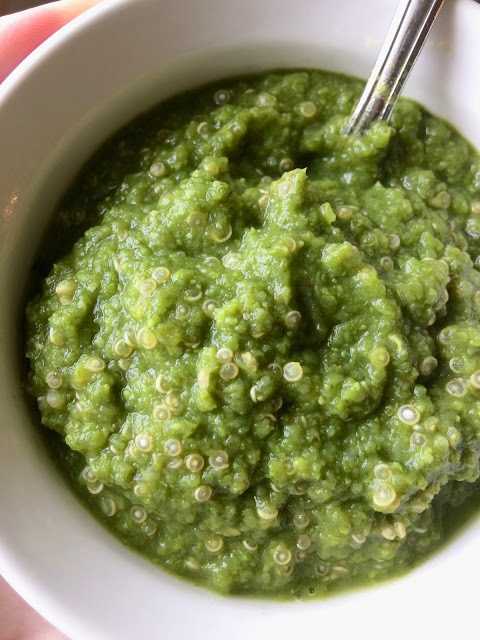 The benefits of steaming fruits and vegetables for babies are many. From increasing the nutrition to decreasing the risk of food borne illness. There are several other ways you may do that. Let’s first have a look at the importance of cooking fruits and vegetables which you feed your baby.
The benefits of steaming fruits and vegetables for babies are many. From increasing the nutrition to decreasing the risk of food borne illness. There are several other ways you may do that. Let’s first have a look at the importance of cooking fruits and vegetables which you feed your baby.
It is a well-known fact that heat is a very effective method of killing bacteria and other harmful microbes that might be present on the surfaces of any foods we consume. Since a baby’s immune system is weaker compared to an adult’s, cooking fruits & vegetables before feeding them to your baby acts as an extra layer of protection against your baby getting sick.
Softens up the food –Raw fruits and vegetables pose a great risk of choking hazard as any piece that is not small enough can be hard for your baby to get down their oesophagus. Moreover, putting aside a few exceptions, many vegetables and fruits are quite hard and solid when raw.Your baby could very likely bite off a piece big enough to choke them. Cooking vegetables and fruits breaks them down and the result is a softened, mushy product that is easy to chew and swallow.
Moreover, putting aside a few exceptions, many vegetables and fruits are quite hard and solid when raw.Your baby could very likely bite off a piece big enough to choke them. Cooking vegetables and fruits breaks them down and the result is a softened, mushy product that is easy to chew and swallow.
Plant-based food items like fruits and vegetables have tough cell walls which makes it harder for our digestive system to effectively absorb nutrition. Cooking any kind of food does not only change its physical properties, but the exposure to heat while cooking also breaks down its chemical structure. Since babies already have underdeveloped digestive systems, cooking the fruits and vegetables before feeding it to them aids in easier digestion and higher nutrition retention.
Here’s a point to be noted; cooked does not equal steamed.
There are several ways in which a parent can cook their baby’s food and in theory, all forms of cooking produce the same result – food that is decontaminated, softened, and easier to digest.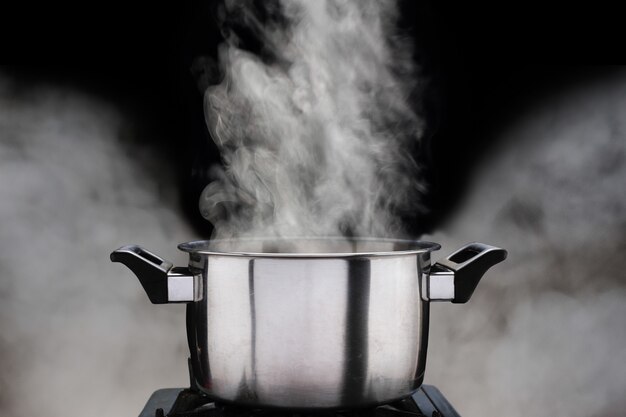 However, each method of cooking is not entirely the same. If you fry the fruits and vegetables, for example, they might be too fatty to give to your baby.
However, each method of cooking is not entirely the same. If you fry the fruits and vegetables, for example, they might be too fatty to give to your baby.
Boiling them keeps the caloric intake to a minimum but often results in a loss of nutritional components that seep into the water when vegetables and fruits are boiled. The reason we recommend steaming vegetables and fruits over other methods of cooking is because steaming preserves most nutrients inside the food, while it also achieves the above mentioned results.
Why is steaming baby fruits & vegetables a great option?Most fruits and vegetables should be steamed before feeding until the infant is roughly 8 months old. Cooking is required for some harder, firmer foods, such as apples, only to soften them enough to purée. Steaming/cooking is optional for softer foods like mangoes or berries, but it can still be beneficial for babies 6–8 months old because cooking makes the food simpler to digest and allows the baby to obtain more nutrition.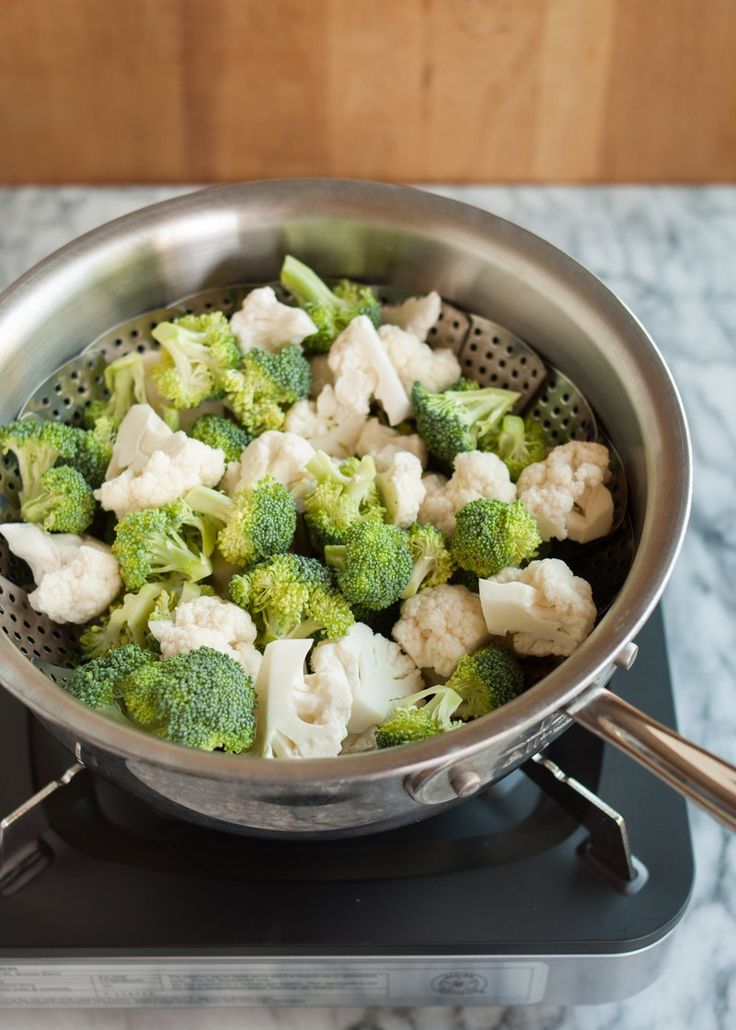
When fruits and vegetables are cooked using methods other than steaming, they often tend to lose a lot of their flavour. The flavours of the many foods you steam concurrently do not get mixed up like they would if you boiled them, retaining their original flavour. Food remains moist and tender after steaming. It’s less likely for the cooking liquid to jiggle or absorb too much water because it never touches the food. This means the shape, color, flavour, and texture of the food is preserved. The benefits of steaming vegetables and fruits are very vast. Steaming vegetables in this manner is considered a healthy habit that brings many benefits to the human body. It can help fight different kinds of infections, balance the digestive system, and more. Not only that, it also helps protect the skin from damage caused by sunlight, which helps in keeping your baby’s skin healthy and wrinkle-free. Hence steaming your baby foods is definitely one of the best ways to get the most pure taste and health benefits out of it.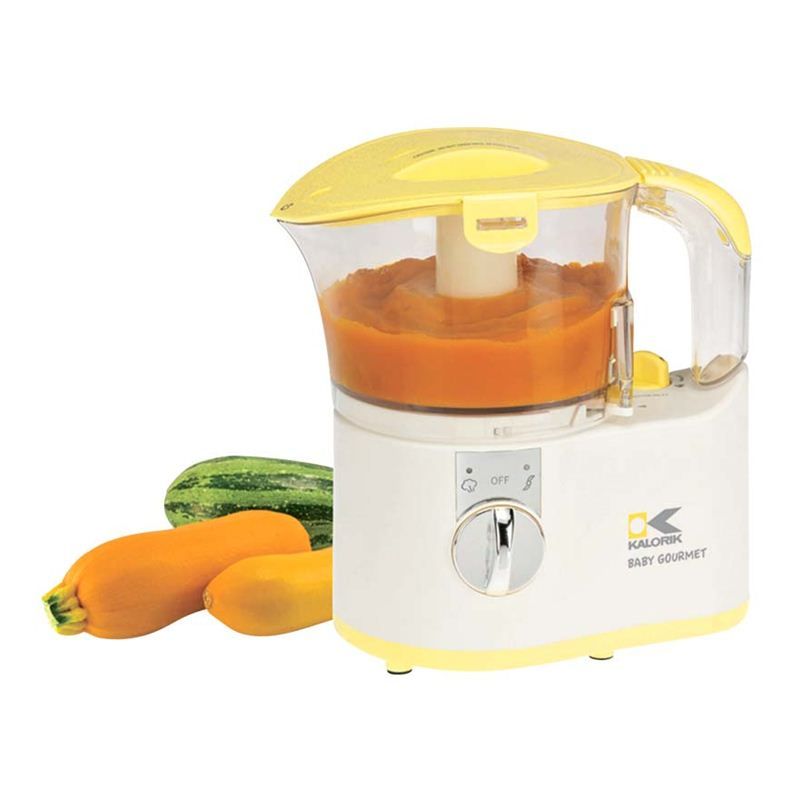
Buy Healthy Nutritious Baby, Toddler food made by our own Doctor Mom !
Shop now!Baby puree at home: recipes
Baby puree from vegetables and fruits at home: cooking secrets
Vegetable and fruit puree often becomes the first meal of the baby after breast milk or formula, so many mothers prefer to cook it on their own. Although modern manufacturers convince us that baby food is devoid of preservatives and harmful additives, fresh vegetables and fruits are much healthier, especially when it comes to infant nutrition. Yes, and cooking baby puree at home is not so difficult.
Vegetables or fruits?
Let's try to make baby puree for our beloved baby. Despite the fact that pediatricians of the last century recommended starting complementary foods with fruits, it is better to first introduce the child to vegetables - modern doctors and nutritionists have come to this conclusion. Boiled vegetables do not irritate the gastrointestinal tract, are better absorbed, satisfy hunger, do not cause allergies and increased gas formation. In addition, vegetables do not contain fructose, which irritates the pancreas. And one more weighty argument in favor of the fact that it is better to start with vegetables - fruits are tastier, and if the baby tries them first, he will refuse vegetables, because they will seem to him more insipid.
In addition, vegetables do not contain fructose, which irritates the pancreas. And one more weighty argument in favor of the fact that it is better to start with vegetables - fruits are tastier, and if the baby tries them first, he will refuse vegetables, because they will seem to him more insipid.
How to prepare baby vegetable puree
What can baby puree be made from? The ideal puree for the first feeding is from cauliflower or zucchini. A little later, you can introduce pumpkin, broccoli, carrots, potatoes and green peas. Before cooking, vegetables are washed well, peeled, cut into pieces and cooked - steamed, in the oven or in the usual way, in water. The first two methods are preferable because oven roasting and steaming preserve the vitamins, minerals, nutrients, and natural color in the vegetables. And most importantly - such vegetables are much tastier. Some nutritionists recommend boiling vegetables with their skins on before peeling them, so choose your own cooking method.
If you do have to cook vegetables in a saucepan, use an enamel pot, add less water and put the vegetables in boiling water. Boil until soft, but do not overcook vegetables and fruits, otherwise they will become tasteless and lose a lot of vitamins. Ready vegetables are chopped with a blender until smooth and slightly diluted with water, vegetable broth, breast milk or mixture to a gruel state, since the child does not yet know how to digest thick food. Small pieces of vegetables in puree sometimes cause the baby to refuse to eat, so the knives in the blender should be well sharpened, and if there is no technique, you can grind the vegetables through a sieve. Salt and spices are usually not added to baby vegetable puree, and if the baby is more than 6 months old, you can put a little butter in the puree.
A few rules for making baby puree at home
- Use only fresh vegetables and fruits.
- Water for cooking vegetables must be filtered or bottled.

- If you are using frozen foods, choose only whole fruits and vegetables as they retain the most nutrients.
- All utensils for preparing baby food should be perfectly clean, so if the knife falls on the floor, it should be washed well. Also, the presence of pets in the kitchen during the cooking process is not allowed.
- Avoid vegetables and fruits high in nitrates, such as spinach, lettuce, beets, melons, and watermelons, in infants' diets.
- Store-bought vegetables are recommended to be soaked in water to remove nitrates: 1-2 hours for this, up to 24 hours for potatoes.
- Mix sour-tasting fruits and berries with sweet fruits - for example, blackcurrant goes well with a banana or pear. Sour puree is unlikely to please the baby.
- Give your child only fresh food, but yesterday's puree from the refrigerator is better to eat yourself.
DIY fruit puree for children
Children are more likely to eat fruit puree, because fruits are tastier and sweeter. Fruits contain a large amount of vitamins, minerals, trace elements, fiber and antioxidants, so they are very useful for a growing organism. However, fruits are strong allergens, especially berries, bananas, pomegranates and apricots, so they should be given with caution, watching the child's reaction. The most low-allergenic fruits are apples and pears, so it is better to start complementary foods with them, and then introduce all other fruits. First, the baby is fed with a one-component puree made from only one product, and then you can mix different vegetables and fruits, and not only among themselves. Very tasty combinations of fruits and vegetables, such as apples and zucchini, pumpkins and pears.
Fruits contain a large amount of vitamins, minerals, trace elements, fiber and antioxidants, so they are very useful for a growing organism. However, fruits are strong allergens, especially berries, bananas, pomegranates and apricots, so they should be given with caution, watching the child's reaction. The most low-allergenic fruits are apples and pears, so it is better to start complementary foods with them, and then introduce all other fruits. First, the baby is fed with a one-component puree made from only one product, and then you can mix different vegetables and fruits, and not only among themselves. Very tasty combinations of fruits and vegetables, such as apples and zucchini, pumpkins and pears.
Fruits must be of good quality, without damage, ripe and juicy, and the rules for preparing fruits do not differ from the rules for cooking vegetables. Naturally, fruit puree is not sweetened with honey and sugar - the later the child learns the taste of sugar, the stronger his health will be.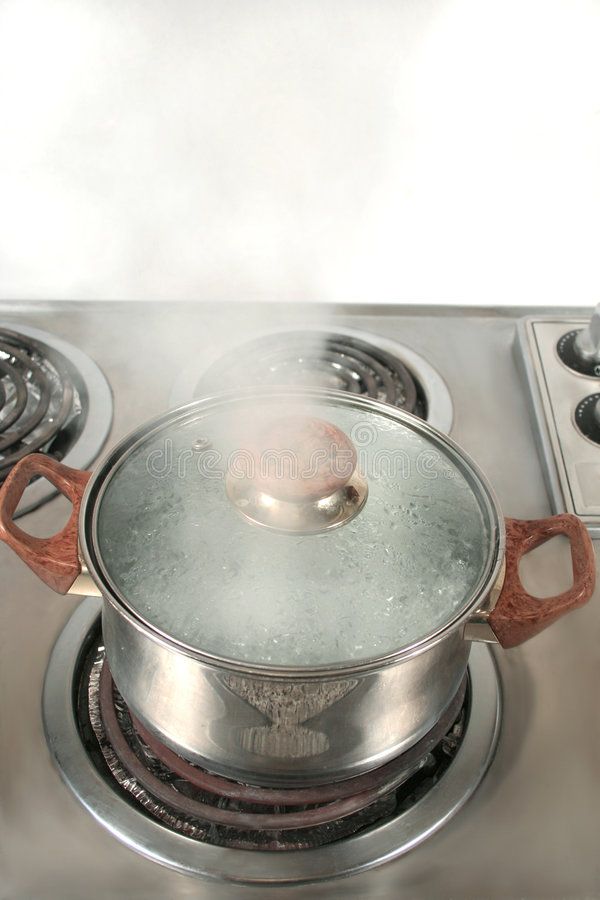
Aromatic pumpkin puree
Babies love to eat pumpkin because of its pleasant sweet taste, besides pumpkin is very healthy. It contains a whole storehouse of various vitamins, including vitamin T, which normalizes the metabolism in the body. For pumpkin puree, small pumpkins are suitable, since large fruits are not as tasty and difficult to peel.
Cut the pumpkin in half, and then into small slices, one or two of which (depending on the appetite of the crumbs) cut into cubes. Boil the pumpkin in a double boiler or in water for 20 minutes, while warm, beat with a blender to a smooth puree and dilute if necessary with water or a mixture. Add oil and salt depending on the age of the child.
Gentle Broccoli Puree
One of my favorite homemade baby puree recipes is broccoli. This cabbage is extremely useful because it contains potassium, iron, calcium and other valuable substances. It has much more vitamin C than lemon, and the reason for its nutritional value is its high protein content.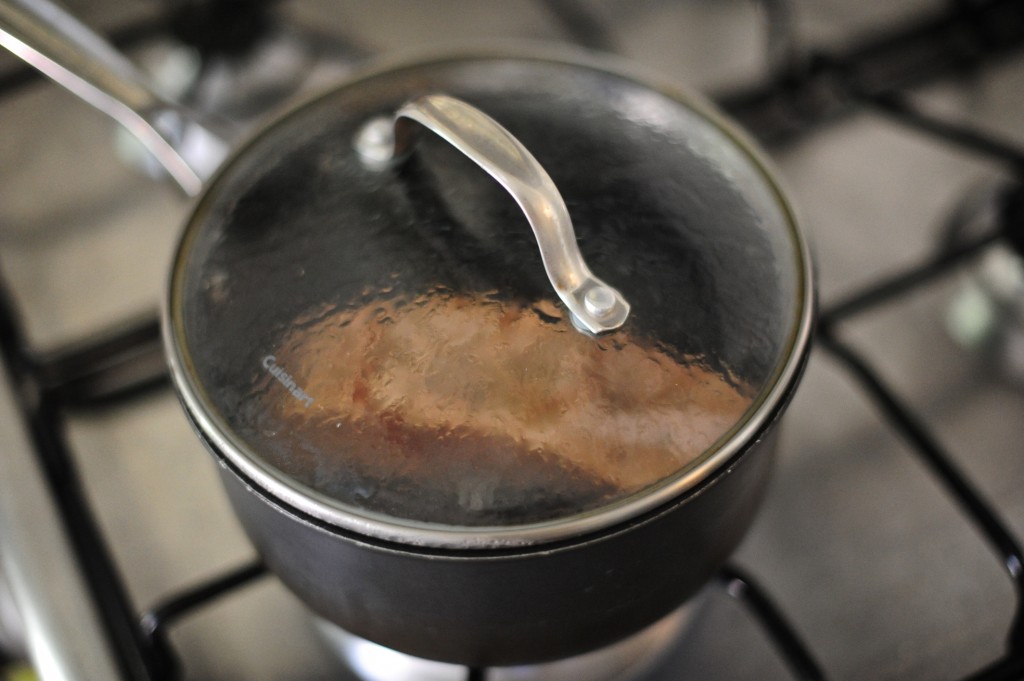
Separate the broccoli into florets, wash thoroughly and steam for 20 minutes. Cabbage cooks faster in water - fresh broccoli will take 7 minutes, and frozen - about 15 minutes. Broccoli puree does not need much water, it should lightly coat the vegetables. After the cabbage becomes soft, chop it in a blender or pass through a sieve. If you're mashing for kids older than a year old, be sure to add butter - the little ones will gobble up broccoli on both cheeks!
How to make baby pear puree at home
Pear is a very delicate, tasty and healthy fruit that rarely causes intolerance. In addition to the high vitamin value, the pear has other beneficial properties - it facilitates digestion and removes toxins from the body.
For baby food, choose green pears to reduce the risk of allergies, which are rare among babies. Peel the fruits from the peel and core with seeds, and then stew the pear in a bowl with a thick bottom in a small amount of water for 15 minutes. Let the pear cool slightly and puree it in a blender with a little of the remaining pear broth. For large kids, fruits can not be boiled, but add half a teaspoon of natural honey to the puree.
Let the pear cool slightly and puree it in a blender with a little of the remaining pear broth. For large kids, fruits can not be boiled, but add half a teaspoon of natural honey to the puree.
Zucchini and apple puree
Little gourmets will love this delicious puree, besides, zucchini is considered the most hypoallergenic vegetables, which, due to their high potassium content, have a beneficial effect on the heart. Apples contain iodine, iron and phosphorus, and due to the high concentration of vitamin C, apples help in the prevention of colds and viral infections.
Wash the zucchini and apples well, de-seed them, cut into pieces and cook in a saucepan for about 20 minutes, considering that the zucchini will cook 5 minutes faster. By the way, apples are steamed for 15 minutes, zucchini - 10 minutes. Next, vegetables and fruits are chopped in a blender, mixed and brought to a boil. For allergic children, this is the best side dish!
Exotic mango
Sometimes you can pamper your baby with exotic fruits - for example, make mango puree. This is a very delicate fruit with an original taste, containing 12 amino acids and improving sleep.
This is a very delicate fruit with an original taste, containing 12 amino acids and improving sleep.
Choose only ripe fruits that are soft and reddish-yellow in color. Peel the mango from a thick skin and a large bone, put the pulp in a blender, add 2 tbsp. l. water and mash it, and then heat it in a saucepan for several minutes. For a baby up to a year old, it is better to give mashed potatoes with heat treatment to facilitate digestion, and older children can be fed raw mangoes.
Carrot and Potato Puree
Make normal potato puree without oil. Peel the carrots, grate them and stew them with butter and vegetable broth - about 1 tsp is required for 200 g of carrots. butter and 150 g of broth. When the carrot becomes very soft, wipe it through a sieve, and then put it on a plate, put mashed potatoes on the second half. Let the child choose whether to mix two types of puree for him or eat separately!
Pumpkin and apple puree
This sweet, sugar-free pumpkin-apple puree, cooked in a double boiler, is suitable for children who are already accustomed to “adult” food and are able to perceive a new unusual dish.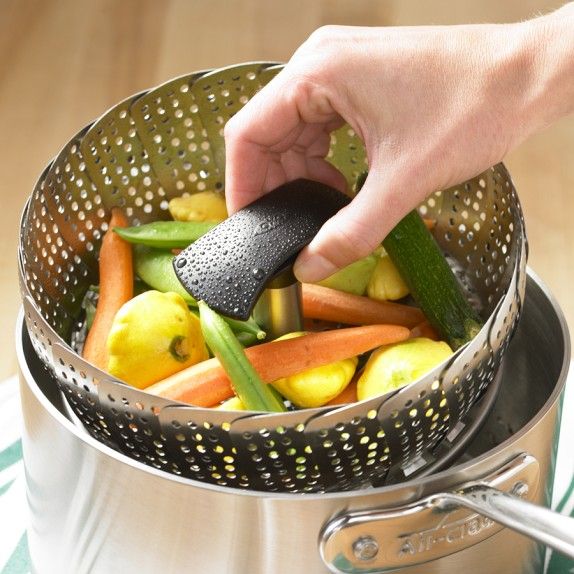 It is better to take a pumpkin with a gray or green skin and with bright pulp - such fruits contain more vitamins and other useful substances. Apples are green because they have fewer allergens.
It is better to take a pumpkin with a gray or green skin and with bright pulp - such fruits contain more vitamins and other useful substances. Apples are green because they have fewer allergens.
Cut pumpkin and apple flesh without peel or seeds into pieces, place in a steamer and cook for 20 minutes. Grind pumpkin, apples and raisins in a blender or by hand with a pusher if the child has already learned to chew. They say that this puree is very good for skin and hair, and you can check the truth of this statement yourself if you start feeding this dish to your baby.
In autumn, you can take care of preparing vegetables for baby purees. Some vegetables, such as pumpkin, carrots and apples, are stored fresh, and zucchini, broccoli, berries are frozen in small portions, because due to frequent freezing and thawing, vegetables lose vitamins and become tasteless. You can roll up fruit and vegetable puree in jars, but this snack should not be given to babies. Remember that the taste of vegetables determines whether the baby will love them in the future, so try to prepare an appetizing and tender puree - for health and good mood!
Baby food at home: recipes, videos
Growing up a little person is a delightful process that cannot but please the parents of the crumbs. However, the first feeling that mom and dad face when it comes time to introduce complementary foods into a child's diet is confusion.
However, the first feeling that mom and dad face when it comes time to introduce complementary foods into a child's diet is confusion.
Which food is the most healthy, hypoallergenic and delicious? Most often, the first "real" meal of the crumbs after mother's milk and formula is vegetable or fruit puree. The choice of baby food on store shelves is very wide - each manufacturer tries to convince the buyer that jars with beautiful labels contain only natural products, there are no dyes, sweeteners and other harmful additives. A variety of "meals" for babies in factory packaging marked "3+ months." does not guarantee the true usefulness of the product that is inside. Every mother understands that complementary foods prepared on her own, from natural products, are much better for her child.
Another advantage of making your own baby food is that you can choose the best ingredients, wash fruits, berries or vegetables thoroughly, peel them well and remove damaged parts.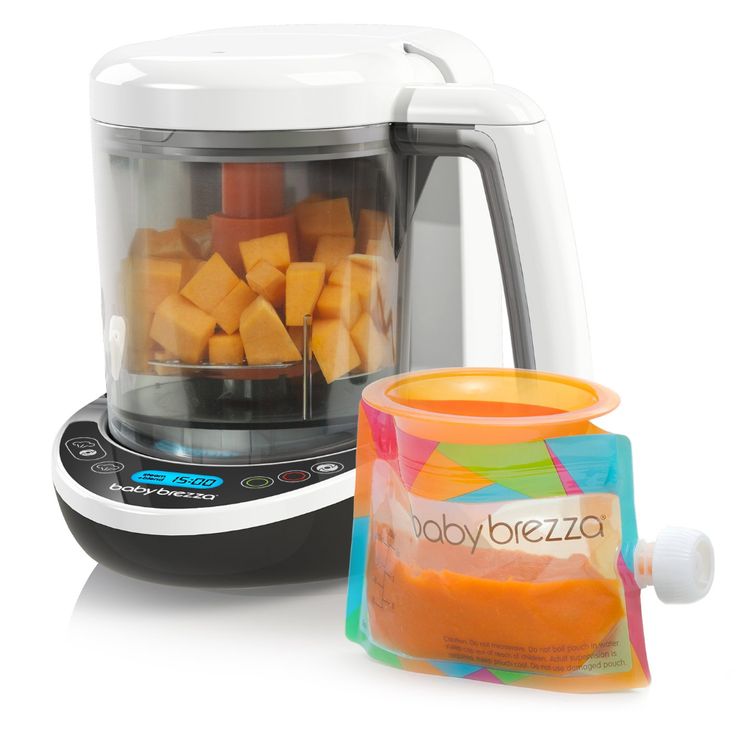 In addition, the parents of the crumbs themselves can choose the way - how best to cook baby food: food can not only be boiled, but also baked in the oven or cooked in a double boiler.
In addition, the parents of the crumbs themselves can choose the way - how best to cook baby food: food can not only be boiled, but also baked in the oven or cooked in a double boiler.
It is also important that home-made baby puree is much tastier, it will undoubtedly be useful for a growing organism and will not cause allergies! Even the simplest children's dish, prepared by mom, keeps the warmth of caring hands and cannot be compared with expensive dishes from the store.
What should be the correct complementary foods for children? Of course, you should start with one ingredient (such purees are called one-component purees), then move on to more complex options. Experts emphasize that the most suitable product for the first "dish" is zucchini. Cauliflower can also be considered neutral. Gradually it will be possible to introduce carrots, pumpkins, potatoes, broccoli and green peas. At the first stage of the introduction of complementary foods, it is better to give preference to vegetable purees and switch to fruit purees when the child already treats “serious” food well.
The basic rules and principles of preparing high-quality baby food yourself:
- it is best to take fresh products for preparations: fruits from the tree, berries from the bush and vegetables from the garden are much more useful than those that have already been in the refrigerator for a week. If there are no seasonal vegetables at the time of preparation, the use of frozen foods is acceptable, but in this case, try to give preference to whole fruits - they retain the greatest amount of nutrients;
- only filtered water should be used for cooking vegetables;
- Preparing baby food requires, if not separate dishes, then thoroughly washed ones. Do not, for example, cut vegetables on a meat board. If there is a dog or cat in the house, then you need to restrict her access to the kitchen when food is being prepared;
- It is not recommended to use vegetables and fruits in the diet of infants, in which the content of chemical additives is consistently high.
 These often include watermelons and melons, beets, spinach and lettuce;
These often include watermelons and melons, beets, spinach and lettuce; - It is better to add water to vegetables purchased on the market before cooking: put carrots, potatoes, zucchini and cauliflower in filtered water for a couple of hours - this will remove nitrates;
- do not leave excess mashed potatoes for the next meal: the child should be given only freshly prepared food, and "yesterday's" mashed potatoes are best eaten by adults or given to pets;
- you can choose cream, boiled egg yolk, grated cheese or finely chopped dill as an additive to puree - this will diversify dishes for children from 8 months;
- try it! Children's food can and should be enjoyed by an adult.
There is another question that often worries parents: is it permissible to preserve baby puree and how to do it correctly? After all, such complementary foods for the developing body of a small child must be prepared daily for one or even two or three years: until the baby is ready to eat adult food from the common table.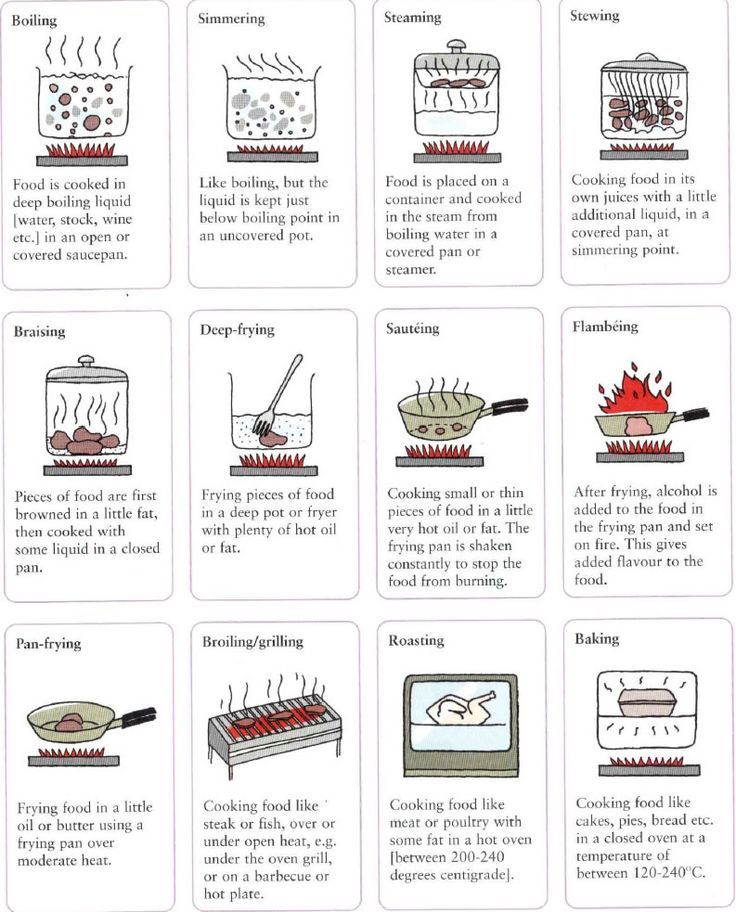 Not every mother has the time and opportunity to prepare baby puree daily, but you don’t want to buy food for the baby in the store. In addition, it is obvious that in the winter-spring period it is almost impossible to find fruits and vegetables grown without the addition of chemicals. The answer to the question is quite simple: the requirements for the conditions for preparing baby food are very strict (keeping the temperature, sterilizing jars, etc.), but using an autoclave solves all problems: all that is required is to load jars with blanks into the autoclave for 20 minutes and set temperature 120 degrees. After cooling, it is better to store baby food in a dark, cool place for about 12 months, daily delighting the child with homemade homemade food.
Not every mother has the time and opportunity to prepare baby puree daily, but you don’t want to buy food for the baby in the store. In addition, it is obvious that in the winter-spring period it is almost impossible to find fruits and vegetables grown without the addition of chemicals. The answer to the question is quite simple: the requirements for the conditions for preparing baby food are very strict (keeping the temperature, sterilizing jars, etc.), but using an autoclave solves all problems: all that is required is to load jars with blanks into the autoclave for 20 minutes and set temperature 120 degrees. After cooling, it is better to store baby food in a dark, cool place for about 12 months, daily delighting the child with homemade homemade food.
Pumpkin puree: tender and aromatic
Pumpkin is a delicious vegetable that is good for babies. This fruit has a beneficial effect on digestion, is well absorbed by the child's body and is rich in various vitamins: A, C, B, B2, E, PP, T. In addition, the carotene content in pumpkin is 5 times higher than in carrots!
In addition, the carotene content in pumpkin is 5 times higher than in carrots!
Baby pumpkin puree has a sweet taste, so the kids eat this dish with great pleasure. For preparations, it is better to buy small whole pumpkins, as they usually taste better than large ones and are easier to peel.
- Rinse pumpkin well under running water, peel, cut in half, remove seeds.
- Then you need to cut the fruit into small cubes, put in a saucepan and pour water. Cooking time after boiling - 20 minutes. You can also steam pumpkin: it will retain more nutrients with the same cooking time.
- The next step is to beat the cooked pumpkin with a blender until the consistency of a gentle puree. If the dish turned out to be thick, add water or milk (milk mixture).
- Vegetable oil and salt are added to pumpkin puree to taste, but these additives should be used with caution: only if they are acceptable for the age of the child.
For babies older than 8 months, pumpkin puree is supplemented with other fruits and vegetables, and also added to porridge.
Broccoli puree: simplicity and elegance
Broccoli is not just cabbage, but a storehouse of vitamins and microelements! Beautiful on the outside and fantastic on the inside - the high content of protein and vitamin C (there is more in broccoli than in citrus!) deserves special attention. There are many articles on the Internet about the benefits of broccoli, and preparing this product is not at all difficult.
To prepare this type of cabbage for baby food, you need to choose the highest quality product: the inflorescences must be unopened, green, moderately elastic.
- Broccoli should be washed, cut into pieces and boiled. Steaming will take 20 minutes, in water - faster: fresh cabbage should be boiled for a little more than 5 minutes, and frozen - at least 10. When cooking, do not pour a lot of water, it should only cover the vegetables a little.
- When the cabbage is cooked, take it out, transfer it to a blender bowl and grind to a puree state, add a little warm boiled water.

- Add salt and butter to taste.
Pear puree: a fragrant dessert
It's no secret that babies love fruit puree - almost all children like sweet dishes. The pear is a suitable option for the first one-component fruit food - a sweet fragrant fruit that has a high concentration of vitamins, stimulates digestion and almost never causes allergies.
If you want to cook a safe puree for your child at home, then it is best to choose green pears, these are the fruits that are considered to be the least allergenic.
- Fruit must be peeled, core removed with seeds, cut into cubes.
- Transfer the pear to a heavy-bottomed enamel saucepan, add a little water and simmer over low heat for 15-20 minutes.
- Then transfer to a blender bowl and puree until smooth. If the puree is too thick, add a little warm boiled water.
- You can dilute the dish with milk or formula - it depends on the taste preferences of the baby.
A similar recipe is used for applesauce. In the future, try to combine these two fruits in one dish.
In the future, try to combine these two fruits in one dish.
Classic apple-zucchini puree
A good appetite of a baby pleases every mother, but little gourmets are often capricious, and it is not easy to please them. Zucchini and apple puree is a classic combination of products that will diversify the baby's menu already in the fifth or sixth month of life.
This complementary food contains only hypoallergenic products, has a positive effect on the functioning of the heart, and stimulates the strengthening of the immune system.
- Selected products should be thoroughly washed, peeled, core removed from apples.
- Cut zucchini and apples into cubes, put fruits in a cooking pot first - they should cook for 5 minutes longer, and then vegetables. The total cooking time is 20 minutes.
- When the products become soft, they must be ground to a puree with a blender.
- To taste - dilute with water, add salt, oil.
This puree can be considered a meal on its own for the little ones or a delicious side dish for older kids.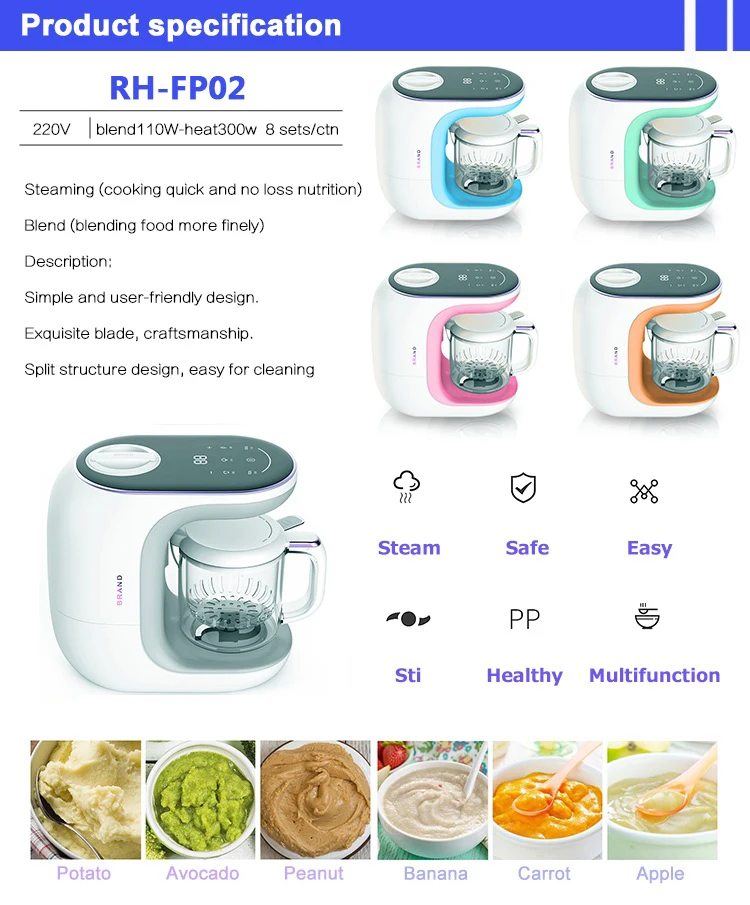
Colorful Carrot-Potato Puree
For many parents, carrots and potatoes are the simplest and most understandable type of complementary food for the baby. However, if you cook and serve standard products a little differently than usual, you can improve the traditional taste of a classic dish.
Young potatoes should not be chosen for baby puree - they contain a lot of starch. Carrots, on the contrary, it is better to buy young ones.
- Wash and peel the vegetables thoroughly and cut into cubes.
- It is better to cook mashed potatoes and carrots by steaming, vegetables should be boiled separately. Cook until tender, 20 minutes on average.
- Separately puree the vegetables in a blender, diluting with warm water if needed.
Both types of puree are beautifully placed on a plate without mixing: the child can decide for himself whether to mix food or eat separately.
Exotic variety: mango puree
Tropical fruits should not be offered to a small child before the age of 7-8 months and only if there was no allergy to other foods.
Mango is an aromatic fruit with an original pleasant taste. This fruit helps to overcome colds, reduce inflammation in the body, improve sleep and normalize the functioning of the stomach.
To feed the baby, ripened fruits should be selected - quite soft, yellow-red in color.
- Fruit should be peeled and pitted, cut into cubes.
- Put the raw mango into a blender, purée, transfer to a heavy-bottomed pot and simmer for a few minutes.
Older children may be offered uncooked mango puree. This fruit is completely independent - no need to add sugar or water!
Sweet pumpkin puree with apple
This puree is called sweet, as both pumpkin and apples are high in sugar. Such a dish is well suited as a dessert for children who already eat “serious” food well - vegetable purees and cereals.
In addition, such complementary foods are a great option for the autumn-winter period: seasonal products contain enough choline, a lot of fiber, natural proteins and vitamins (groups A, B, C, E, etc.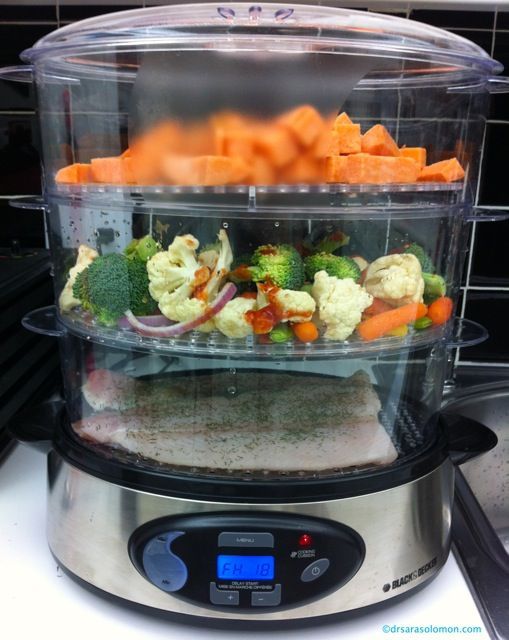 ), zinc, sodium, calcium and only!
), zinc, sodium, calcium and only!
- Pumpkins and apples must be peeled, peeled and seeds removed, cut into cubes and sent to a double boiler.
- Cook for about 20 minutes until the food is soft. Then place them in a blender bowl, add raisins and chop. If the child chews well, mash everything with a fork, and leave the raisins whole.
Hearty puree with celery and turkey
For older kids, meat is added to vegetable dishes - turkey fillet is an excellent option for developing a child's taste preferences. Appetizing and fragrant meat puree includes only three ingredients: celery root, turkey fillet, butter.
The proportion of meat and celery should be approximately 10:1, the amount of butter to your taste.
- The turkey fillet must be boiled in the "second stock" for about 20 minutes after boiling.
- Wash, peel and cut the celery root into cubes and put into the boiling broth 10 minutes before it is done.
- After cooking, beat the turkey and celery with a blender until puree, if necessary, add the broth.
